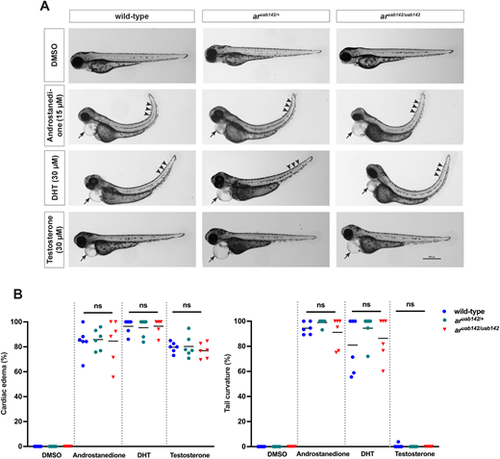Fig. 2
|
Identification of androgens that cause phenotypes in wild-type and nuclear androgen receptor (ar) mutant embryos. Wild-type or ar mutant embryos were exposed to vehicle (0.1% DMSO), 5α-androstane-3,17-dione (androstanedione), dihydrotestosterone (DHT) or testosterone, beginning at 3 h post-fertilization. (A) Representative images of embryos at 3 days post-fertilization. Cardiac edema and tail curvature are indicated by arrows and arrowheads, respectively. Each clutch was derived from heterozygous parents and contained a mix of wild-type, heterozygous aruab142/+ or homozygous aruab142/uab142 embryos. Lateral views with anterior to the left, dorsal to the top. Scale bar: 500 μm. (B) Percentage of embryos exhibiting cardiac edema or tail curvature. Each data point is the mean percentage of embryos in a single clutch exhibiting cardiac edema or tail curvature (11-57 embryos per clutch). Clutches in the same treatment group were assayed on different days. Genotypes and treatments are separated by vertical gray dotted lines in each graph. Horizontal lines are the mean of each treatment. ns, not significant (P>0.05), one-way ANOVA with Tukey's multiple comparisons test. |

